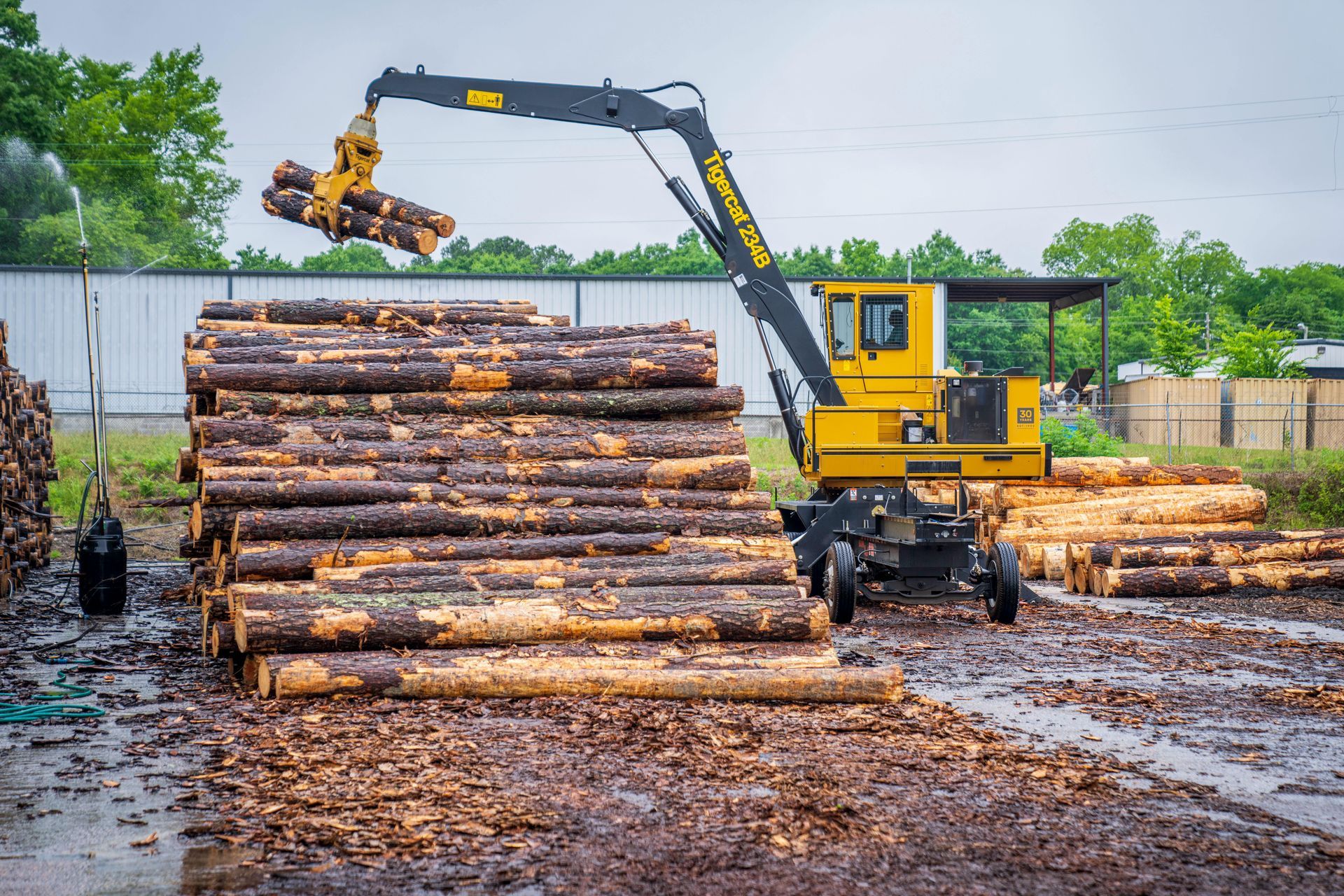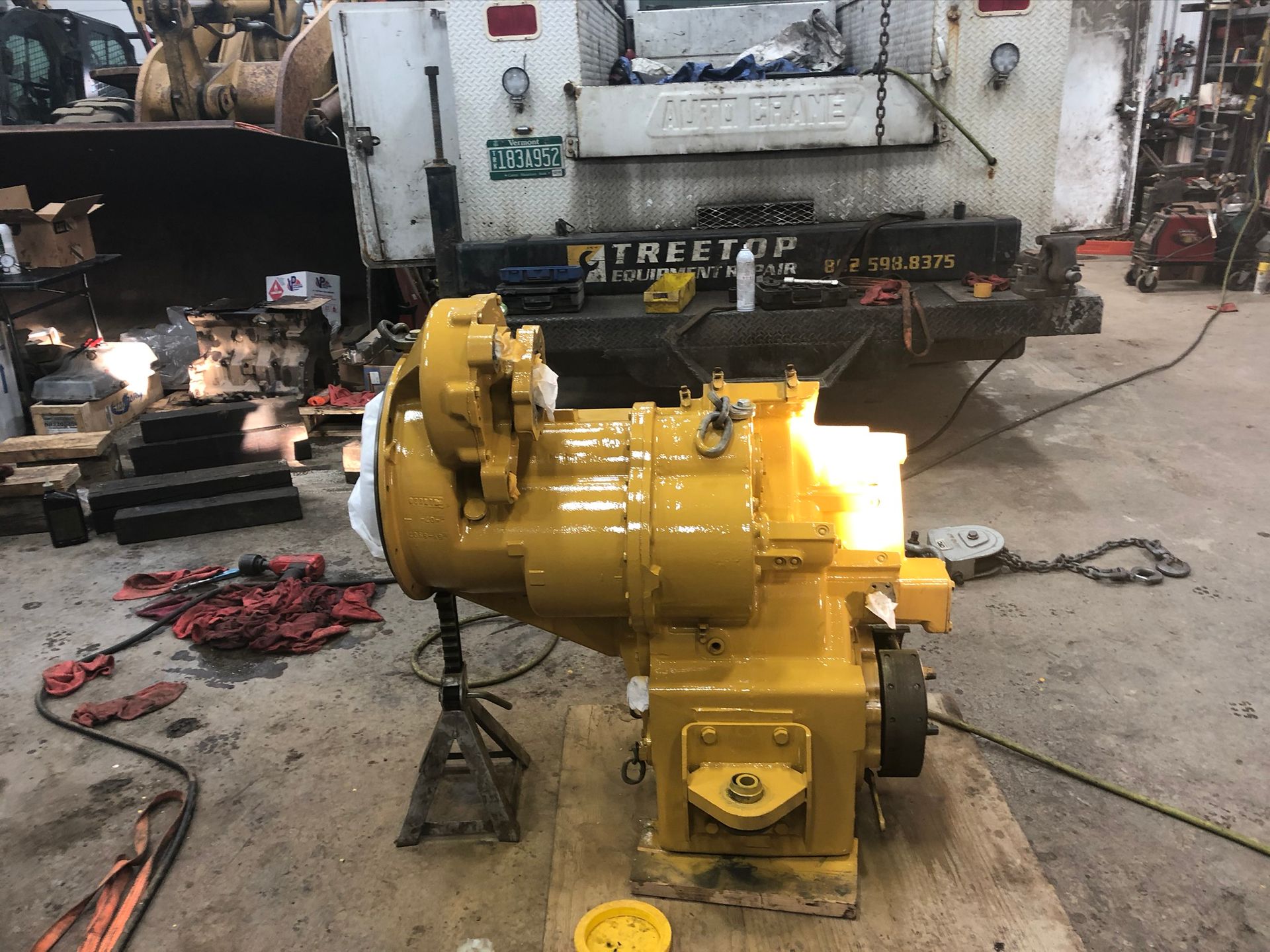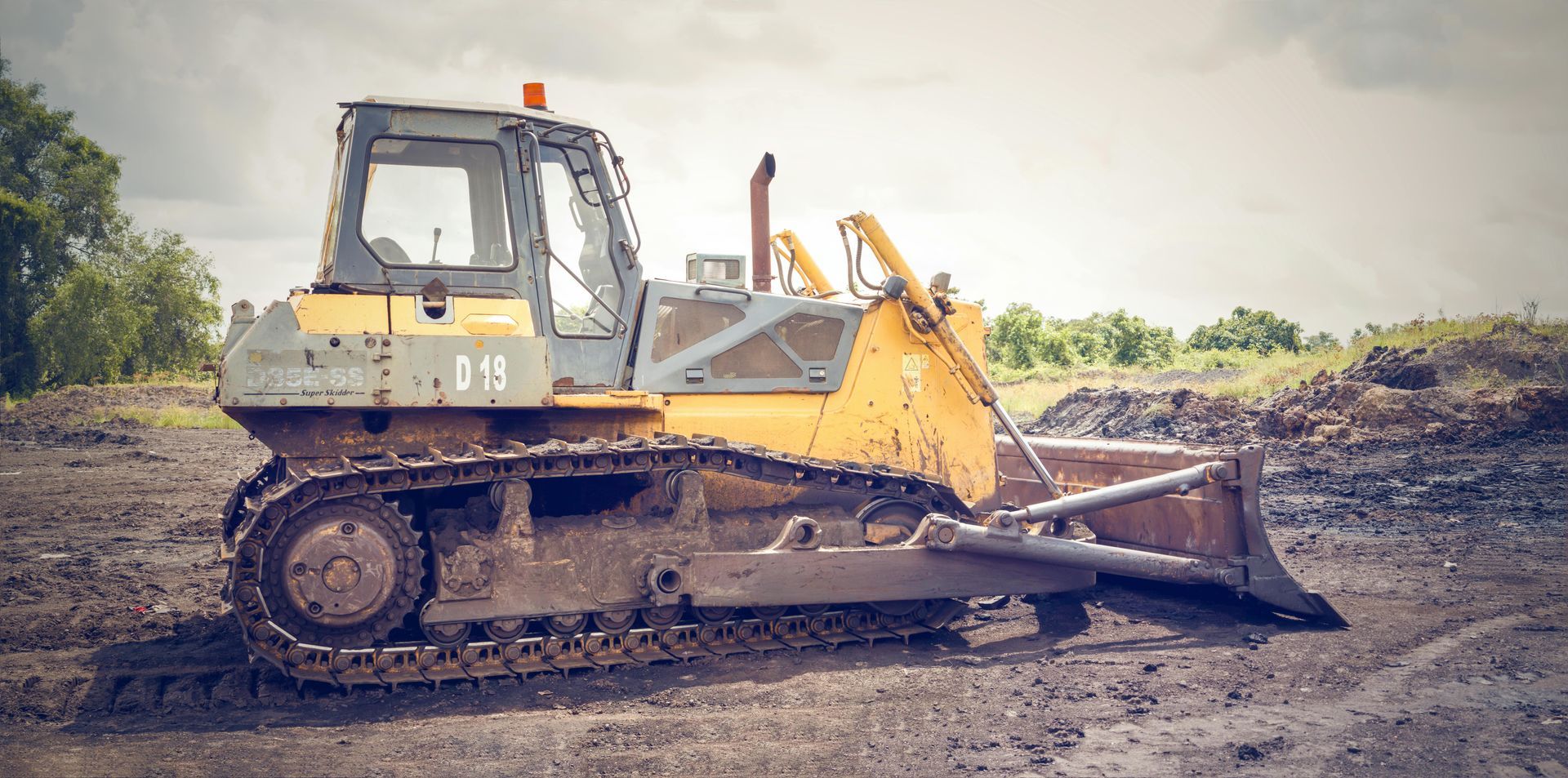Skidder Maintenance Tips: Tire Safety and Efficiency for Forestry

Essential Skidder Maintenance Tips
Keeping your skidder in peak condition isn’t just about avoiding breakdowns—it’s about maximizing efficiency, ensuring safety, and getting the job done right. Whether you're pulling logs through tough terrain or steep slopes, regular maintenance keeps your machine running strong.
A well-maintained skidder means fewer costly repairs, longer equipment life, and better performance in the field. From tire care to hydraulic system checks, knowing the right maintenance practices helps you avoid downtime and keep operations smooth.
This guide covers key maintenance tips, common skidder issues, and best practices to help you keep your machine in top shape.
What Are the Key Maintenance Tips for Skidders?
A proper maintenance routine is the difference between a reliable skidder and costly downtime. Forestry work is tough on equipment, and without regular care, a skidder can break down when you need it most. Daily inspections, tire checks, and fluid monitoring help prevent major failures and keep your machine running efficiently.
How to Inspect a Skidder Regularly?
A daily walk-around inspection is essential. Before starting the machine, take a few minutes to check for leaks, wear, and loose components. Focus on these key areas:
- Tires – Look for cuts, cracks, or punctures. Worn-out or improperly inflated tires can reduce traction and fuel efficiency.
- Hydraulic System – Inspect hoses and connections for leaks or damage. Low hydraulic pressure affects skidder performance.
- Fluids – Check engine oil, coolant, transmission fluid, and hydraulic oil levels. Running on low or dirty fluids leads to overheating and breakdowns.
- Brakes and Steering – Test the brake system and steering responsiveness to ensure safe operation.
- Winch and Grapple – For cable skidders, check cable wear and tension. Grapple skidders should have smooth hydraulic movement.
- Air and Fuel Filters – A clogged filter reduces engine efficiency. Clean or replace as needed.
A well-inspected skidder operates better and lasts longer. Catching minor issues early prevents expensive repairs down the road.
What is the Importance of Tire Pressure in Skidder Maintenance?
Tire pressure isn’t just about keeping tires inflated—it directly impacts traction, fuel efficiency, and machine stability. Running a skidder on underinflated or overinflated tires can lead to uneven wear, reduced grip, and increased fuel consumption.
- Low tire pressure – Causes poor traction, excessive sidewall flexing, and increased rolling resistance, making the skidder work harder.
- High tire pressure – Reduces tire contact with the ground, decreasing traction and increasing the risk of punctures.
To maximize performance and extend tire life, always follow the manufacturer’s recommended pressure levels. Check tire pressure before each shift, especially if operating in changing terrain or weather conditions.
How to Ensure Optimal Performance and Safety?
A well-maintained skidder is a safe skidder. To keep the machine running at its best, follow these best practices:
- Lubricate moving parts – Reduce wear and tear on joints, bearings, and pivot points.
- Tighten loose bolts and connections – Vibrations can loosen components over time. Secure all fittings.
- Keep electrical systems in check – Faulty wiring can lead to starting issues or system failures.
- Follow a service schedule – Stick to manufacturer-recommended maintenance intervals for oil changes, filter replacements, and system checks.
- Train operators on proper handling – Smooth operation reduces mechanical stress and extends the skidder’s lifespan.
Regular maintenance isn’t just about keeping the machine in working order—it ensures safety for the operator and the crew. A well-maintained skidder gets the job done faster, safer, and with fewer problems.
How Do Tire Issues Affect Skidders' Performance?
Tires are one of the most critical components of a skidder. They handle heavy loads, rough terrain, and extreme conditions. If they’re not maintained properly, they can cause downtime, safety hazards, and higher operational costs. Understanding common tire issues and their impact on performance helps prevent unnecessary breakdowns.
What Are Common Tire Problems for Skidders?
Skidder tires take a beating daily. Without proper care, they wear out fast, leading to traction loss, instability, and costly replacements. Here are the most frequent issues:
- Tread Wear – Over time, skidder tires lose grip, making it harder to maneuver on uneven or muddy terrain.
- Sidewall Damage – Cuts, cracks, and bulges weaken tire integrity, increasing the risk of blowouts.
- Punctures and Leaks – Sharp debris, rocks, and logs can pierce tires, leading to slow leaks or sudden flats.
- Improper Inflation – Underinflated tires reduce traction and fuel efficiency, while overinflated tires wear unevenly and risk bursting.
- Bead and Rim Issues – Loose or damaged rims cause air leaks and instability, especially under heavy loads.
Ignoring these problems can lead to unplanned downtime and dangerous working conditions.
How Can Tire Maintenance Prevent Accidents?
Tire failures aren’t just expensive—they’re dangerous. A blown tire on rough terrain can cause a skidder to lose control, tip over, or damage nearby equipment. Regular tire maintenance reduces the risk of accidents by ensuring:
- Consistent traction on slopes and wet surfaces
- Stable handling when transporting logs
- Even weight distribution to prevent tipping
- Reliable braking and stopping power
To prevent accidents, inspect tires before and after every shift. Replace damaged or worn-out tires before they become a safety hazard.
What Should You Know About Different Types of Skidder Tires?
Not all skidder tires are the same. Choosing the right type depends on terrain, workload, and operational needs.
- Standard Skidder Tires – Best for general forestry work, offering a balance of durability and traction.
- Flotation Tires – Designed for soft, muddy terrain, these wider tires distribute weight evenly to prevent sinking.
- Heavy-Duty Tires – Made for rocky or steep environments, they have reinforced sidewalls to withstand extreme conditions.
- Solid Tires – Puncture-proof and maintenance-free, but they provide less shock absorption than air-filled tires.
Matching the right tire to the job improves performance, reduces wear, and extends the lifespan of both the tires and the machine.
What Maintenance Practices Enhance Skidder Lifespan?
A skidder is a major investment, and proper maintenance is the key to making it last. Ignoring routine upkeep leads to expensive repairs, unexpected breakdowns, and reduced efficiency. Regular checks on hydraulics, fluids, and common wear areas ensure maximum performance and longevity.
How to Maintain Hydraulic Systems in Skidders?
The hydraulic system powers essential skidder functions, including steering, the grapple, and the winch. Without proper maintenance, leaks, pressure loss, and component failures can bring operations to a halt.
To keep the hydraulic system in top shape:
- Check for leaks daily – Look for oil spots under the machine and inspect hoses and fittings.
- Monitor hydraulic fluid levels – Low fluid levels cause sluggish performance and overheating.
- Change hydraulic filters regularly – Dirty filters restrict flow and reduce efficiency.
- Inspect hoses and seals – Cracked or worn-out hoses are a common cause of pressure loss.
- Keep the system clean – Contaminants in the fluid can damage pumps, cylinders, and valves.
A well-maintained hydraulic system ensures smooth operation, better fuel efficiency, and longer equipment life.
What Role Does Regular Fluid Check Play in Skidder Maintenance?
Fluids are the lifeblood of a skidder. Running on low or contaminated fluids leads to engine overheating, transmission failures, and increased wear on components.
- Engine Oil – Change at the recommended intervals to prevent internal wear and overheating.
- Coolant – Keep levels topped off to prevent overheating in summer and freezing in winter.
- Transmission Fluid – Ensures smooth gear shifting and reduces friction in moving parts.
- Differential and Axle Lubrication – Protects against grinding and metal-on-metal contact.
Checking and replacing fluids on time reduces mechanical stress and extends the lifespan of critical components.
How to Repair Common Skidder Issues?
Even with regular maintenance, skidders face wear and tear from daily operations. Knowing how to handle minor repairs prevents small problems from turning into major downtime.
- Hydraulic Leaks – Replace damaged hoses or tighten loose connections immediately.
- Brake Failures – Check for worn-out brake pads and ensure fluid levels are correct.
- Electrical Issues – Inspect battery terminals and wiring for corrosion or loose connections.
- Winch Malfunctions – Replace frayed cables and test the tension before use.
- Overheating Engine – Clean out radiator debris and check coolant levels.
Regular maintenance combined with quick repairs keeps a skidder in top working condition and prevents costly breakdowns.
How to Safely Operate a Cable Skidder?
Operating a skidder requires skill, caution, and proper technique to ensure safety and efficiency. A well-maintained machine is only as effective as the operator handling it. Knowing how to operate a cable skidder correctly, use a grapple skidder effectively, and transport timber safely reduces the risk of accidents and increases productivity.
What Are the Best Practices for Cable Skidder Operators?
Cable skidders are designed for pulling logs out of dense forests using a winch and cable system. To operate one safely and efficiently, follow these key practices:
- Inspect cables before every use – Look for frayed, kinked, or damaged sections that could snap under tension.
- Secure logs properly – A loose log can shift unexpectedly, causing instability.
- Maintain a stable position – Keep the skidder on firm ground before winching logs to prevent tipping.
- Use controlled winching – Avoid sudden pulls that could cause the cable to snap or overload the machine.
- Keep a clear path – Ensure no obstacles or crew members are in the winching area.
- Communicate with the team – Use hand signals or radios to coordinate movements safely.
Proper handling of a cable skidder ensures efficient log retrieval and prevents damage to both the equipment and the environment.
How to Utilize Grapple Skidders Effectively?
Grapple skidders use a hydraulic claw to grab and move logs, making them ideal for faster, bulkier transport. To get the most out of a grapple skidder:
- Check hydraulic systems before each use – Leaks or pressure issues can affect grapple performance.
- Position logs correctly – A poorly balanced load reduces traction and stability.
- Avoid overloading – Carrying too much at once can damage the grapple and strain the engine.
- Use smooth movements – Jerky operation causes unnecessary wear on the hydraulic system.
- Be mindful of terrain – Soft or sloped ground requires careful maneuvering to prevent slipping or tipping.
When used correctly, grapple skidders can speed up logging operations while reducing manual labor.
What Should Be Considered When Transporting Timber?
Once logs are skidded to the landing site, proper transport techniques are essential to ensure efficiency and prevent damage.
- Stack logs securely – Loose logs on a truck or trailer pose a safety hazard.
- Follow weight limits – Overloading increases the risk of tire blowouts and mechanical failure.
- Use proper tie-downs – Secure logs with heavy-duty straps or chains to prevent shifting.
- Plan the transport route – Avoid roads that can’t handle the load or have tight turns.
- Follow safety regulations – Ensure the load meets transportation laws and weight restrictions.
Safe transport protects both the operator and the equipment while ensuring logs arrive at their destination without damage.
How Does Terrain Impact Skidder Efficiency?
Forestry work takes place in some of the toughest environments, from muddy lowlands to steep hills and rocky trails. The terrain a skidder operates on directly affects its performance, fuel efficiency, and safety. Adjusting skidder settings and techniques for different landscapes helps reduce wear, improve traction, and prevent accidents.
What Terrain Challenges Do Skidder Operators Face?
Skidders operate in unpredictable conditions, and each type of terrain presents unique challenges:
- Muddy or Swampy Areas – Soft ground can cause skidders to sink or lose traction.
- Steep Slopes – Moving logs uphill or downhill requires careful weight distribution to avoid tipping.
- Rocky or Uneven Ground – Sharp rocks and tree stumps can puncture tires and damage undercarriage components.
- Snow and Ice – Slippery conditions make it harder to control movement, increasing the risk of accidents.
Understanding these challenges helps operators prepare their skidder for the terrain ahead.
How to Adjust Skidder Settings for Different Slopes?
Steep terrain requires proper machine adjustments to ensure stability, safety, and efficiency. Here’s how operators can adapt:
- Reduce speed on slopes – Fast movement increases the risk of losing control or tipping over.
- Use lower gears – This improves torque and traction, making it easier to climb hills.
- Adjust tire pressure – Lower pressure provides better grip on soft or uneven terrain.
- Distribute weight properly – Logs should be positioned to maintain balance and stability.
- Avoid sudden movements – Abrupt stops or turns can cause skidders to slide or roll over.
Using the right technique on steep terrain prevents unnecessary wear and ensures safe operation.
What Are the Risks of Skidding Across Various Terrains?
Each type of terrain comes with risks that can affect the skidder, operator, and overall productivity:
- Sinking in mud – Getting stuck wastes time and requires extra fuel or assistance to pull the machine out.
- Slipping on slopes – Loose soil or wet ground can cause loss of traction, leading to rollovers.
- Tire damage from rocks – Sharp objects can cause punctures or sidewall cuts, reducing tire lifespan.
- Engine strain in deep snow – Cold temperatures and heavy snow make the engine work harder, increasing fuel consumption.
Operators should always assess terrain before starting a job, use the right skidder settings, and adjust driving techniques based on conditions. A well-prepared skidder moves efficiently, stays safe, and lasts longer.
Conclusion
Keeping your skidder in top condition isn’t just about avoiding breakdowns—it’s about boosting efficiency, extending machine lifespan, and ensuring safety on the job. Regular inspections, proper tire maintenance, and timely repairs prevent costly downtime and keep your operations running smoothly. Whether you’re working on steep slopes, muddy terrain, or rocky ground, the right maintenance practices make all the difference. By staying proactive, you’ll maximize performance, reduce repair costs, and get the most out of your forestry equipment.
When it comes to skidder maintenance and heavy machinery repair, trust Tree Top Equipment Repair. Specializing in forestry, construction, truck, and agricultural equipment services, they provide precision diagnostics, hydraulic repairs, and full-service maintenance to keep your machines running at peak performance. Whether you need log loader service, feller buncher maintenance, or diesel engine diagnostics, Tree Top Equipment Repair ensures fast turnaround times and reliable service. Contact them today and keep your equipment working as hard as you do!
FREquently asked questions
What are some essential skidder maintenance tips for tire safety in the forestry industry?
Regularly check tire inflation to prevent uneven wear and ensure optimal load capacity. Adhere to the manufacturer’s recommendations for pressure levels based on the weight of the machine and the load it carries.
How often should I inspect the engine of my grapple skidder?
It is important to monitor the engine regularly for any signs of leaks or overheating. Following the maintenance manual can help you schedule timely inspections to prevent unexpected downtimes.
What is the significance of using the correct chain for heavy equipment like cable skidders?
Using the correct chain is crucial for safety and efficiency. It ensures that the winch operates effectively when transporting logs and reduces the risk of equipment failure, which can lead to hazards on the job site.
How can I prevent damage to my skidder while working on uneven terrain?
To prevent damage, assess the job site for potential obstructions and hazards. Use the machine’s blade or boom to navigate through debris and maintain stability while operating on slopes or uneven ground.
What should I do if I notice an unusual signal from the braking system of my skidder?
If you notice any unusual signals from the brake system, immediately stop using the machine and perform a thorough check. It may indicate a malfunction that could lead to safety issues if not addressed promptly.
How can effective monitoring of tire conditions enhance productivity in logging jobs?
Effective monitoring of tire conditions can prevent overload and ensure that the machine operates safely and efficiently. This minimizes downtime and maximizes productivity, allowing for more logs to be transported in less time.
What maintenance practices should be implemented to extend the life of hydraulic hoses in heavy equipment?
Regularly inspect hydraulic hoses for wear and leaks. Keeping them clean and free from debris can prevent unexpected damage and ensure the machinery operates efficiently. Always replace hoses according to the manufacturer’s guidelines.
How does proper load management impact the performance of a cable skidder?
Proper load management is crucial as it prevents overload, which can strain the engine and other components. Ensuring that the load is evenly distributed helps maintain stability and enhances the overall performance of the skidder.
What are the safety precautions for equipment operators during forestry harvesting operations?
Equipment operators should always wear appropriate safety gear, be aware of their surroundings, and signal when moving the machine. Following safety protocols helps prevent accidents and ensures a safe working environment on the job site.
Our Services
Contact Information
Phone:
Address:
113 Maple Ridge Ln, Huntington, VT 05462, United States of America
Business Hours
- Mon - Fri
- -
- Sat - Sun
- Closed
Tips & Articles
© 2025 All Rights Reserved | Mitch's Autoworks | Privacy Policy


